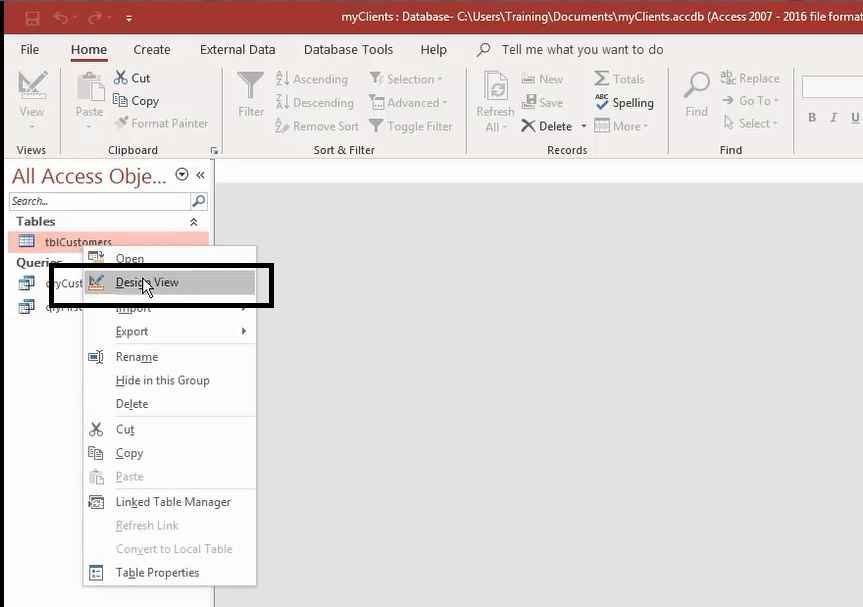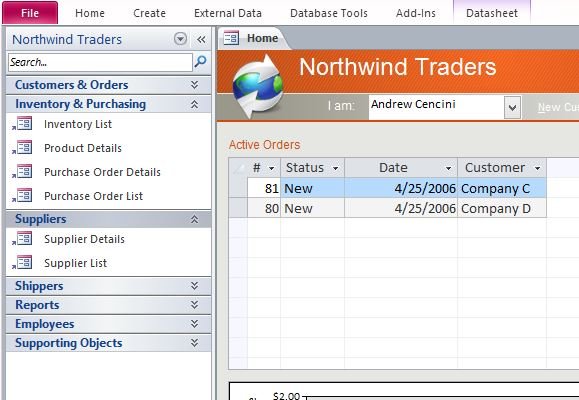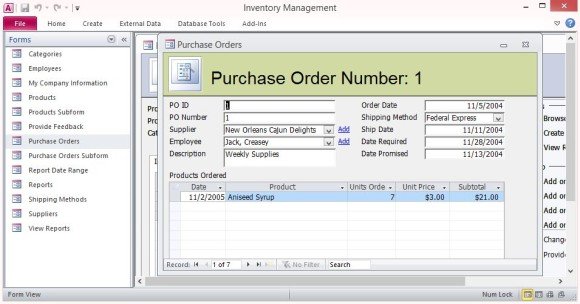

- #MICROSOFT ACCESS PRODUCT RETURNS DATABASE HOW TO#
- #MICROSOFT ACCESS PRODUCT RETURNS DATABASE UPDATE#

In the interest of brevity, we won't cover them here.Ī common instinct Access users have is to create fields to storeĬalculated data in Access tables. SQL Server Query Types The last query types you will see in Access are specific to SQL Server (pass-through and data definition). Microsoft article on union queries is quite helpful. Unfortunately Access doesn't include a Queryĭesign view for Union Queries, so you have to know the SQL You can create a Union Query which willĮssentially display the records from both tables in a single

You'd like to consolidate them into one large list to export or Union Queries Union Queries are a special type of query where you are combining two very similar sets of data into a single view.įor example, perhaps you have two queries with customer names. Multi-dimensionally in much the same way a pivot table in Excel To create these queries, we definitely suggest using the Query Wizard to walk you through the process.Īs shown below, a crosstab query can help you see your data They essentially transform columnar data into a more familiar pivot form. You click the run button, your new table will be created! Crosstab Query Crosstab Queries are definitely underappreciated. You will be prompted to give your new table a name. Select Query, choose the "Make Table" option in the Ribbon.

#MICROSOFT ACCESS PRODUCT RETURNS DATABASE UPDATE#
Table users can view, but you don't want to let them update theĪctual source data. For example, perhaps you want to create a summary Make Table Query A Make Table query creates a brand new table based on a
#MICROSOFT ACCESS PRODUCT RETURNS DATABASE HOW TO#
Which is why Access needs you to tell it how to map the fields The names of the fields are different between the two tables, To:" row highlighted in the screenshot below. Once youĬhoose the table, you can match the fieldsīetween the source table and destination table using the "Append Indicate what table you want to add records to. Your Select Query with any necessary filter criteria. Into a temporary staging table, you can then add them to yourĪctual "live" tables using an Append Query. Append Query An Append Query will add records to a table you choose.įor example, if you have imported records from an Excel file Query will select only the records you want to delete, you canĬhange the query type to "Delete" in the Ribbon and select runĪgain. You can test out your query by running it. Once you have created your Select QueryĪnd specified the criteria you want to use to delete records, Or specific value in the "Update" row of the query:ĭelete Query A Delete Query allows you to delete records that match ForĮxample, "update the State field to 'NY' for all records in theĬustomer table where the City is New York." You can beginīy creating a normal Select Query, then choosing the "Update" Your Access tables based on specific criteria. Update Query An Update Query is used when you want to update records in "selecting" records from the data sources. Select Query This is the default query created by the Access Query ViewĪnd Query Wizard. HereĪre the types of queries supported by Access, and a brief definition There are several special queries that you can use to delete records,Īdd records, create new tables, and update existing records. In addition to the most common query in Access, the "Select Query,"


 0 kommentar(er)
0 kommentar(er)
